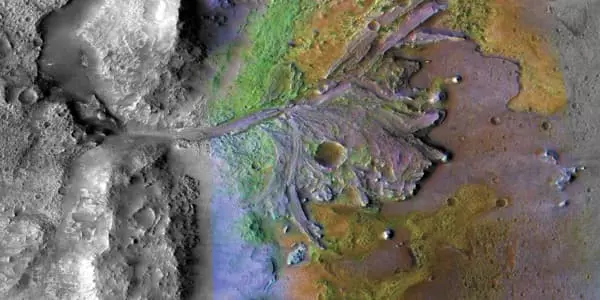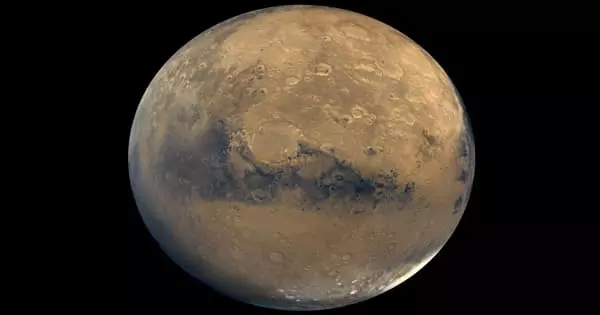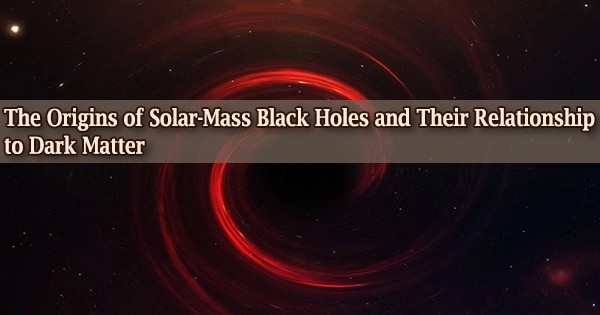A Southwest Research Institute scientist updated Mars chronology models and discovered that terrains shaped by ancient water activity on the planet’s surface could be hundreds of millions of years older than previously thought. This new Mars chronology, based on the most recent dynamical models of the solar system’s formation and evolution, is especially significant as the days count down until NASA’s Mars 2020 Perseverance rover lands on the Red Planet in February 18, 2021.
Dr. Simone Marchi of the Southwest Research Institute described the process, saying, “The idea behind crater dating is not rocket science; the more craters, the older the surface.” Marchi, the study’s author, explained that craters form on any celestial body when an asteroid or comet collides with the surface. Because “the rate of these cosmic crashes over the eons is uncertain,” it is difficult to translate the number of craters to the age of the terrain. Marchi, on the other hand, has taken a novel approach to analyze the available data in light of the new findings.
Unlike on Earth, where terrains are commonly dated using natural radioactivity of rocks, scientists on Mars have largely constrained the chronology of its surface by counting impact craters.
I focused on the Jezero Crater for this paper because it is the landing site for the Mars 2020 Perseverance rover. These surfaces could have formed more than 3 billion years ago, making them up to 500 million years older than previously thought. NASA intends to have Perseverance collect and package surface samples that will be returned to Earth for radiometric dating by a future mission.
Dr. Simone Marchi
“The idea behind crater dating is not rocket science; the more craters, the older the surface,” explains SwRI’s Dr. Simone Marchi, who published a paper about these findings in The Astronomical Journal. “However, the devil is in the details. Craters form when asteroids and comets collide with the Earth’s surface. The rate of these cosmic collisions over eons is unknown, making it difficult to convert crater numbers to terrain ages. I took a fresh look at it, building on recent advances in our understanding of the solar system’s early evolution.”
Scientists have calibrated a lunar crater chronology using radiometric ages of precious lunar rocks returned by the Apollo missions. This lunar chronology is then extrapolated to Mars, which is where things get complicated with the early evolution of the solar system. Our understanding of the time evolution of lunar and Martian impact rates has greatly improved in recent years. The current model improves on how the critical Moon-to-Mars extrapolations are performed.

“I focused on the Jezero Crater for this paper because it is the landing site for the Mars 2020 Perseverance rover,” Marchi explained. “These surfaces could have formed more than 3 billion years ago, making them up to 500 million years older than previously thought. NASA intends to have Perseverance collect and package surface samples that will be returned to Earth for radiometric dating by a future mission. This could provide important ground-truth data for better calibrating our chronology models.”
Jezero Crater has a diameter of about 30 miles and is located within the 750-mile-wide Isidis Basin, which was formed by a previous impact. The latter slashed a large portion of the rim of Mars’ Borealis Basin, which is thought to be the largest and oldest impact basin on the planet. This occurrence of nested craters is of particular interest because samples from these terrains may yield information about the timing of these successive impacts.
In addition, Jezero Crater has clay-rich terrains and a fluvial delta, indicating that the crater once held a lake. As a result, the Jezero Crater is an ideal location for the Mars 2020 mission’s science goal of studying a potentially habitable environment that may still contain evidence of past life. As a result, understanding the timeline of these surfaces is critical.
The new model also provides a revised age for Isidis Basin, which is now estimated to be 4-4.2 billion years old, putting an upper limit on the formation of Jezero Crater and water activity on Mars.
Marchi deliberately chose the Jezero Crater on Mars as the landing site for the Mars 2020 Perseverance rover. “These surfaces could have formed more than 3 billion years ago, making them up to 500 million years older than previously thought,” she said. Marchi is hopeful that the data will use “vital ground-truth data” so that the current existent chronology models can be developed as NASA’s rover lands on the crater to collect samples to be brought back to Earth for radiometric dating and.
Scientists also hope to learn whether Mars can be a habitable environment in the future, given that the Jezero Crater most likely once housed a lake.
















